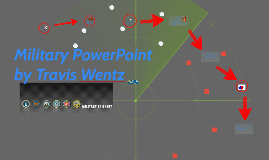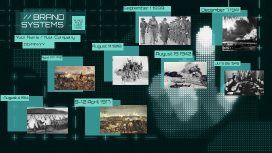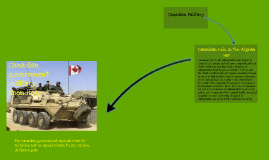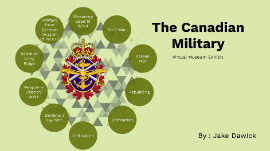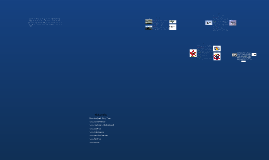Canadian Military
Transcript: Cadets Brewster,Hugh Vimy Ridge www.warmuseum.ca www.spartacus.schoolnet.co.uk www.cadets.ca www.airforce.gc.ca www.canadianwings.com www.forces.ca www.casr.ca They learn about navel and maritime enviorment by participating in many actvities on and off the water. They specailize in sailing, seamanship, shipboard life, navel communications, power boat handling, boat repair, and marine engineering. What the navy does The airforce trains in many different areas. To train for the airforce people must take an aircrew test series and fly 4 missions in a pilot selection system. Then they must undergo medical testing for air operations. This all takes many months of practice. What they do The air cadets: How the airforce trains The ships they use Who they are Armycadet logo The cadets are people who want to join the forces of cadets and can't wait for thrill and excitment. They are also tobe girls and boys ages 12 and up. The army cadets: Lewis Gun They learn the survival skills for the flight group. They focus on the skills of social development, decision-making, and also leadership. Seacadet logo Airforce They need to contain the componts of: corps program, regiponally directed activities, cadet summer traninig centre program, and nationally directed ativities. There cadet activities are: expeditions, navigation, trekking, wilderness survival, outdoor leadership, field traininig, and Canadian army and civillian comunity familiarization. The planes they use The navy is Canada's main water protecters. They moniter and control marine activity in Canadian territory. What the army does There are 3 types of cadets each of them have different andimportant jobs. Here are the names of them: air cadets, army cadets, and sea cadets. This is what they do: Bibliograhy The airforce uses many different kinds of planes. Some of the planes they use are the most intersting things you will ever see, so here is some information on a codple of them: CF-188 CF-18 Hornet: In these planes there are 1-2 pilots and it was upgraded and introduced into the Gulf war 1 in 1998. But, was unsucessful. Then in the year 2000 the upgrade became sucsessful because of the increase in defence budget from the goverment. Lockheed F-35 Lightning 2: In this plane there is 1-2 pilots and its stealth which makes it undetectable by any radar.It can also land vertically for easy landing. In 1996 awarded by the U.S goverment the plane received one of two JSF concept demonstration contracts. The sea cadets: The guns they use All the men and woman in the forces protect our country from harms way. They give Canadians the freedom to do whatwe want to. The Canadian airforce protect Canada from the air. The army defends Canada from the land and water. The Navy defends Canadian waters. The Canadian forces protect our land, and are very brave. c8 rifle The navy uses many ships. Some of the ships they use can be interesting to and also very powerful so heres a list of them: Maritime Coastal Defence Vessel, Patrol Craft Training Vessel, Destroyer DDG-283, Corvette K181, Frigate FFH-334, and Victoria Class. c7 rifle Types of cadets and what they do Vimy Ridge The Canadian milatary has been protecting and giving this country freedom for many years. Some of the history is really interesting just like this, on April 9 , 1917 the Canadian soldiers advanced into german territory from Vimy Ridge.Also from 1914-1918 the Canadian army joined the British army in the front lines.As well the Canadian salvation army helped operate huts, canteens,facilties etc. All this was done in Britian, France, and Belgium. Some of the guns they used were interesting too, such as: the lewis gun: developed in 1911 in the United States, brun light: was the main gun used by the Canadian armies, and the thompson: adopted by the Canadian army in 1940. In this report it is going to talk about the Canadian army and navy (land and water) with sub-topics of what they do, the guns they use (army), and the ships they use (navy). Then it will talk about the aiforce with sub-topics of what they do, the planes they use, and how they train, and the Canadian cadets with the sub-topics of who they are, and the types with what they do. maritime coastal defence vessel F-35 Lightning 2 Aircadet logo The army is Canada's main land protecters. The army defends Canada's territory and does it by providing land survelliance and combat ready forces. The army uses many guns. Some of the guns they use are powerful and very interesting. So heres a list of some of them: C8 FTHB Carbine, Diemaco C7A2 Rifle, C7 and C7A1 Rifles, and C8 and C8A1 Carbines. The airforce work everyday here in Canada. They also play animportant role in protecting Canada. They are often called to flight in a different kind of battle, with confronting the whims of nature. frigate ffh-334 Thompson CF-18 Hornet Land and Water






